Flanger pedals allow musicians to add warm, immersive modulation to their guitar tone. Often grouped with chorus and phasers, these pedals are known for their versatility and how they can transform the feel of a guitar.
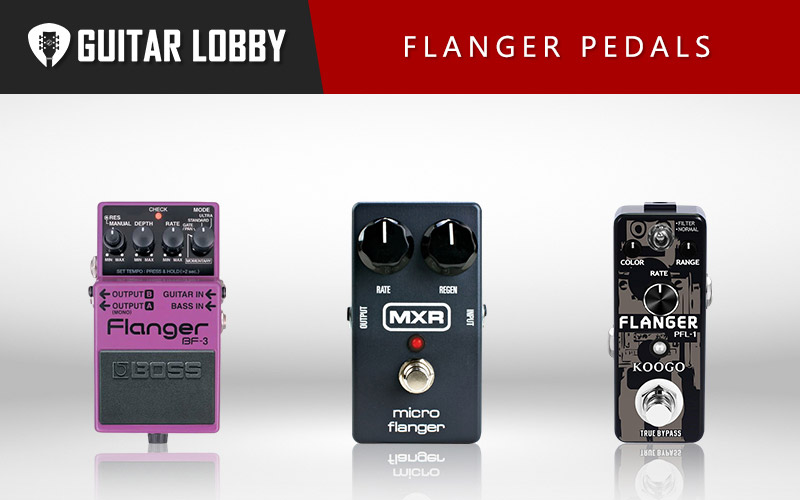
The great thing about flanger pedals is that you can choose to what degree you want to use them. They can be used to produce mind-blowing modulation that completely revolutionizes your tone, or in more subtle, understated ways.
Over the years I’ve tested dozens of these pedals, and in the rest of this article, we’ll be discussing the best flanger pedals at each price point. I’ve included options to suit all levels of ability and styles as well. If you want to learn more about them before reading reviews, we’ve put together a buying guide at the bottom of the page here.
| Name of Product | Image of Product | Description | Price Range | Full Review |
|---|---|---|---|---|
| 1. MXR M117R (Best Overall) | 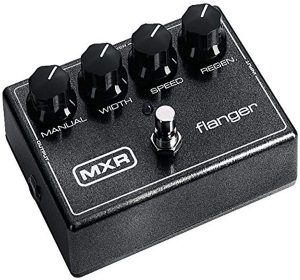 | Type: Digital Effects: Flanger | $170 | Read Full Review Below |
| 2. BOSS BF-3 (Best Value) | 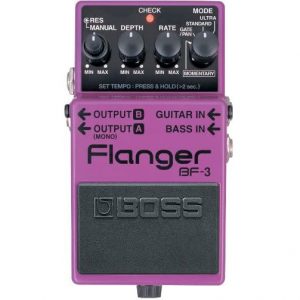 | Type: Digital Effects: Flanger | $140 | Read Full Review Below |
| 3. MXR M152 Micro Flanger (Best Under $100) | 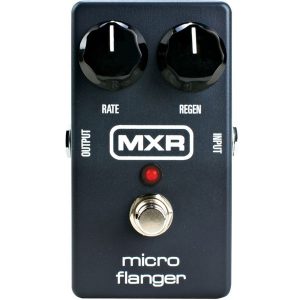 | Type: Digital Effects: Flanger | $90 | Read Full Review Below |
| 4. JOYO JF-07 (Best Under $50) | 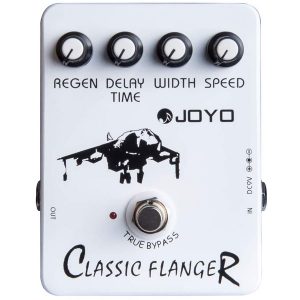 | Type: Digital Effects: Flanger | $35 | Read Full Review Below |
| 5. VSN Analog Flanger | 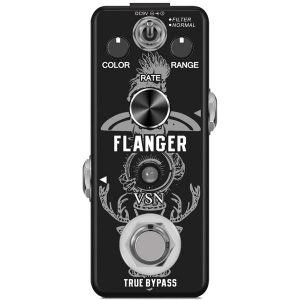 | Type: Analog Effects: Flanger | $35 | Read Full Review Below |
| 6. Koogo PFL-1 Flanger | 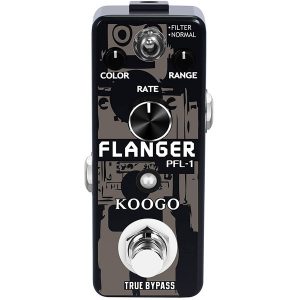 | Type: Digital Effects: Flanger | $35 | Read Full Review Below |
| 7. NUX MOD Core Deluxe | 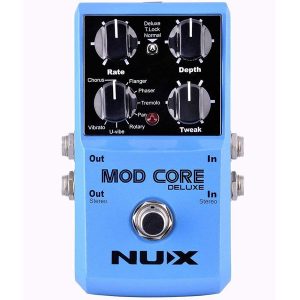 | Type: Analog Effects: Flanger, Chorus, Phaser, Rotary | $80 | Read Full Review Below |
| 8. EX-Swoosh | 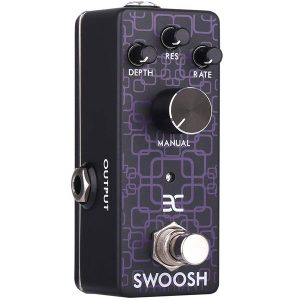 | Type: Analog Effects: Flanger | $35 | Read Full Review Below |
| 9. iSET Analog Flanger | 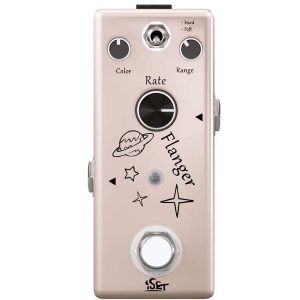 | Type: Analog Effects: Flanger | $30 | Read Full Review Below |
| 10. Donner Jet Convolution | 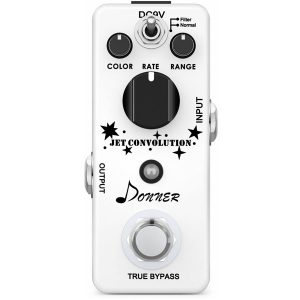 | Type: Analog Effects: Flanger | $30 | Read Full Review Below |
| 11. SONICAKE 5th Dimension | 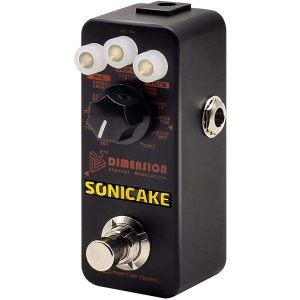 | Type: Digital Effects: Flanger, Phaser, Chorus, Tremolo, Vibrato, Auto-Wah | $60 | Read Full Review Below |
| 12. BOSS MD-200 | 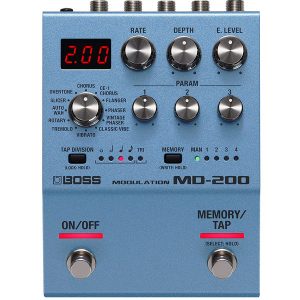 | Type: Digital Effects: Flanger, Chorus, Tremolo, Phaser, Auto-Wah, Rotary | $250 | Read Full Review Below |
| 13. Electro-Harmonix Stereo Electric Mistress | 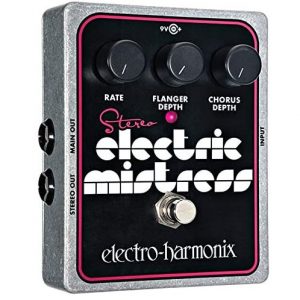 | Type: Digital Effects: Flanger, Chorus | $180 | Read Full Review Below |
| 14. Wampler Terraform | 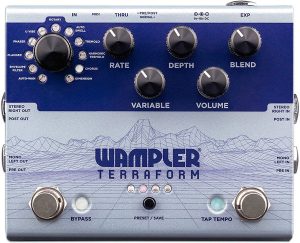 | Type: Digital Effects: Flanger, Phaser, Rotary, Chorus, Tremolo, Envelope, Auto-Wah | $260 | Read Full Review Below |
| 15. Donner Multi-Pad 100 | 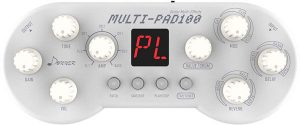 | Type: Digital Effects: Flanger, Chorus, Tremolo, Reverb, Delay | $50 | Read Full Review Below |
| 16. Flamma FX100 | 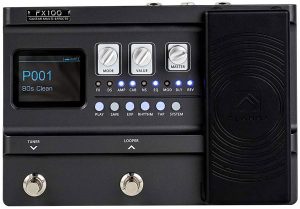 | Type: Digital Effects: Flanger, Delay, Reverb, EQ, Chorus, Phaser, Distortion | $150 | Read Full Review Below |
| 17. BOSS ME-80 | 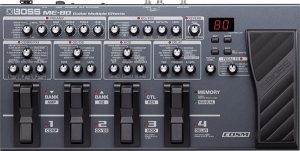 | Type: Digital Effects: Flanger, Multi-FX | $300 | Read Full Review Below |
Here Are the Best Flanger Guitar Pedals
1. MXR M117R (Best Overall)
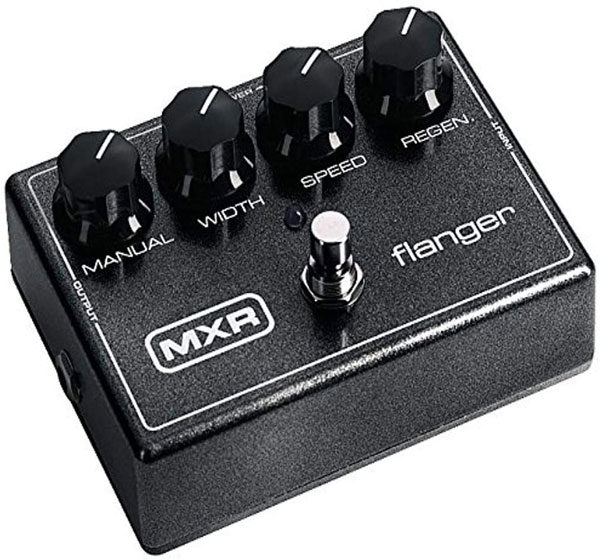
| Estimated Price | $170 |
| Type | Digital |
| Effects | Flanger |
| Connectivity | 1 x 6.35mm Jack Input, 1 x Outputs |
| Power | 9 Volt |
My Review: My first impression of the MXR M117R was that it seemed like a simple pedal, but after experimenting I found that the flanger tones it can produce are wide-spanning and highly creative. Cased in a compact, durable housing, I was impressed to discover that the M117R has four rotary controls installed along its upper row. This meant that it didn’t take long for me to become familiar with the functions of the parameters.
While experimenting with the four controls, I noticed that they can be used to create unique blends of flanging, which vary from the classic dynamic jet plane effect to subtle flanging with a short delay time. I was really impressed with the way that the Width control can be used to engage or disengage auto sweep, allowing me more control over the effect.
One feature I think you’ll find useful is the Manual control. which you’ll find allows you to adjust the frequency band that is affected by the flanging, completely transforming the tone. Like all the MXR pedals I’ve encountered, the M117R is built like a tank. It offers true bypass switching to protect the integrity of your signal and can be powered using a 9 volt DC power supply.
From my findings, the main thing that makes the M117R stand out is its ability to produce high-quality flanging, delay, chorus, and vibrato. MXR has used their knowledge gained from creating other similar pedals like their Phase 95 and Dyna Comp to construct this unique flanger pedal.
Who is this best suited for: One of the best qualities of the MXR M117R is its versatility. This makes it suitable for all guitarists, regardless of experience or style. It is simple to operate but can be used to create complex flanger tones too, making it a great choice for experts and novices alike.
Bottom Line: The M117R Flanger pedal is unrivaled in terms of the quality it produces. With the four parameters, you can create unique blends of modulation and find a tone to suit any genre or style.
2. BOSS BF-3 (Best Value)
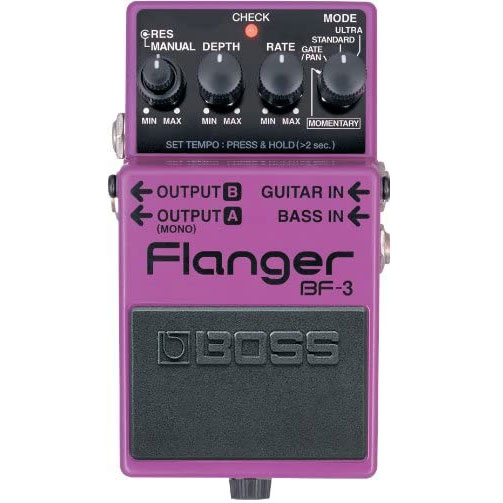
| Estimated Price | $140 |
| Type | Digital |
| Effects | Flanger |
| Connectivity | 2 x 6.35mm Jack Input, 2 x Output |
| Power | 9 Volts DC |
My Review: Renowned for their sturdy build and easy-to-operate controls, Boss’ stompboxes are amongst the most popular effects pedals on the market. Being huge fans of Boss here at Guitar Lobby, we were intrigued by the BF-3. Upon researching the product, it became clear to me that the BF-3 is their flagship flanger pedal, which offers four transformative parameters and dual in/outputs.
I’d used the previous model in the BF line many times before, and so I was keen to find out whether this edition is an improvement on the long-serving BF-2 pedal. I wasn’t disappointed and found that the redesigned BF-3 provides guitarists and bassists with full-bodied stereo flanging to suit all styles and purposes. Compared to the BF-2, the BF-3 features a pair of new modes: Gate/Pan and Ultra, which produce stereo flanging with exceptional depth and quality.
Another conclusion I came to is that the BF-3 can be used to subtly color your guitar or bass’s clean tone, or you can create swirling overtones to completely revolutionize your output. I was pleased to find that it has a tap tempo built-in for precise rhythmic flanging and operates with true bypass switching for maximum signal integrity.
The BF-3 builds upon two decades of its predecessor, the BF-2. On the surface, it looks like a classic Boss stompbox, but it’s actually one of the most detailed devices of its kind. Its standout quality is its ability to create futuristic sounds that can be used to add otherworldly characteristics to a guitar’s clean tone.
Who is this best suited for: The great thing about Boss stompboxes is that you don’t need a wealth of experience with effects pedals to use them. The durability and solid chassis of the BF-3 make it a great choice for the touring musician who is likely to use the pedal extensively.
Bottom Line: With the familiar and unique Boss housing, four transformative rotary controls, and the ability to produce a multitude of flanger-inspired tones, the BF-3 is a wonderful modulation pedal. It also has two inputs tailored for bass or electric guitar and a pair of outputs that cater for signal splitting. After testing dozens of flanger pedals, my conclusion is that the Boss BF-3 is the best flanger pedal for the money.
3. MXR M152 Micro Flanger (Best Under $100)
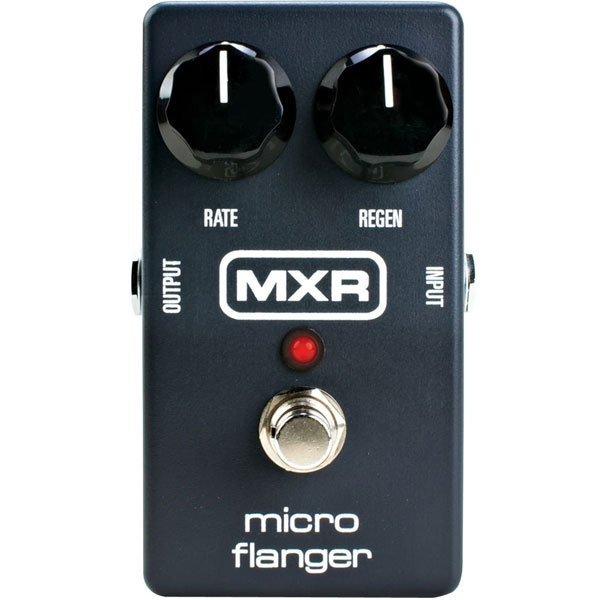
| Estimated Price | $90 |
| Type | Digital |
| Effects | Flanger |
| Connectivity | 1 x 6.35mm Jack Input, 1 x Output |
| Power | 9 Volts DC |
My Review: Within minutes of testing this pedal, I could tell that the M152 Micro Flanger by MXR packs all of the options provided by a larger pedal into a compact and accessible housing. This allowed me to a lot it onto my pedalboard without needing to re-order my other stompboxes. I also found that with its true bypass switching and a visible LED status light, this pedal is ideal for live performances.
The M152 features two controls that can be used to adjust the characteristics of the flanger effect. The Rate control adjusts the speed of the modulation, and Regen adjusts the frequencies with which the effect predominantly interacts with. When using the Regen control, it took me a little time to find the right balance for my guitar’s tone, but this figuring out process was valuable for learning the ins and outs of the pedal.
Even though the Micro Flanger has fewer parameters than most pedals, I believe that you can still create a surprisingly wide range of tones simply by experimenting with combinations between the two controls. Although it’s technically a smaller version of the M117R, it may be a better option if you need to limit the amount of space taken up by a flanger on your pedalboard.
Who is this best suited for: The MXR M152 Micro Flanger is well suited to guitarists who prefer not to waste precious time tweaking numerous parameters to achieve their desired sound. With a simple two-control layout, it is very simple to operate.
Bottom Line: MXR has managed to condense the features of more extensive flanger pedals into the modestly-sized M152 Micro Flanger. It offers a range of modulated tones and has true bypass switching to ensure that your tone isn’t compromised, even when the pedal is deactivated.
4. JOYO JF-07 (Best Under $50)
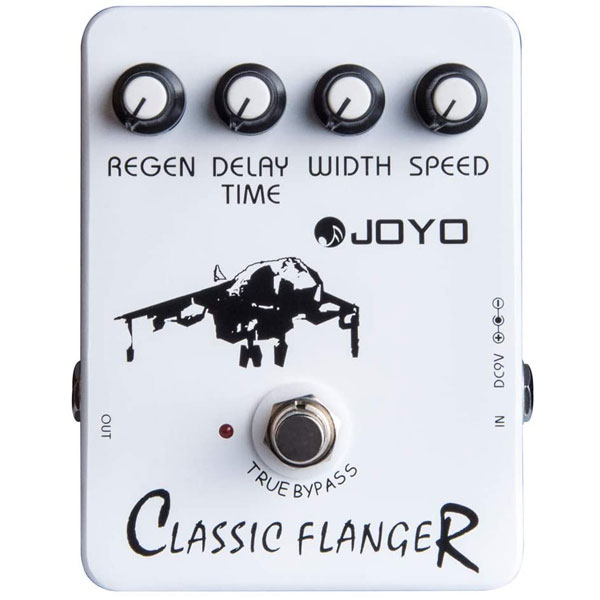
| Estimated Price | $35 |
| Type | Digital |
| Effects | Flanger |
| Connectivity | 1 x 6.35mm Jack Input, 1 x Output |
| Power | 9 Volts DC |
My Review: Right off the bat, I could tell that the JF-07 by JOYO is an affordable flanger pedal that offers that level of detailed controls I’d expect to come across on a much more expensive model. I was initially drawn in by its modern, classy design, and I think the aesthetics of this pedal will blend in nicely with the other effects on your pedalboard.
Housed in a lightweight but robust aluminum chassis, I was impressed to find that the JF-07 has four main controls for adjusting its output. These consist of Regen, Delay Time, Width, and Speed. Another thing I found to be noteworthy is that by adjusting the controls and creating different combinations, the pedal produces a range of modulated tones, including flangers, chorus, and vibrato. This combination of modulation-based effects covers what I consider to be the essentials in that category.
I’ve used many JOYO pedals in the past, so it was no surprise to find that the JF-07 includes true bypass switching for maximum signal integrity. It also has a small but visible LED indicator, so that I could see the status of the pedal even on a dimly lit stage or in a darkened recording studio.
After spending time becoming familiar with the JF-07, I’ve come to the conclusion that the unique selling point of the product is its BDD-inspired circuitry. This makes it possible to create metallic flanger tones, which are very distinctive and different from the sounds produced by many similar devices.
Who is this best suited for: I’d highly recommend the JOYO JF-7 to guitarists who perhaps don’t want to spend a small fortune on a flanger pedal, but still require plenty of tone-adjusting controls to add modulation to their arsenal of effects.
Bottom Line: JOYO’s rise to the forefront of affordable effects pedals has been highly impressive. The JF-7 continues their range, this time focusing on flangers, chorus, and vibrato. With this pedal, you can create a plethora of modulated tones to suit most styles and genres.
5. VSN Analog Flanger
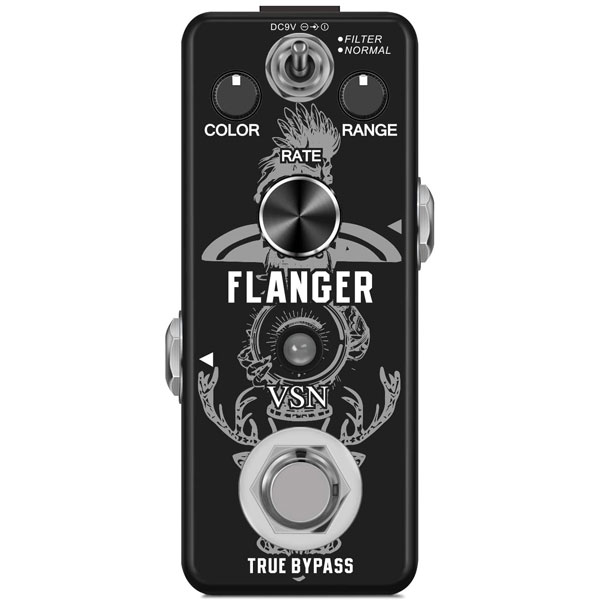
| Estimated Price | $35 |
| Type | Analog |
| Effects | Flanger |
| Connectivity | 1 x 6.35mm Jack Input, 1 x Output |
| Power | 9 Volts DC |
My Review: I was instantly intrigued by the VSN Analog Flanger, and soon discovered that it offers vintage-style flanging, staying true to its roots. The first thing that stood out to me about this pedal was its slimline design, which was welcomed assurance that there was no danger of it taking up unnecessary room on my pedalboard.
The Analog Flanger has three rotary controls and a switch for jumping between two modes. I was impressed with the extensive capabilities of the parameters, which feature Color, Range, and Rate. I quickly learned that the Color knob adjusts the frequency of the flanging effect, while the Rate controls the speed of the modulation.
I believe that the Range control allows you to widen the flanging to suit your sonic needs. The switch that is positioned in the upper center of the pedal flicks between two modes: Filter, and Normal. Filter mode allows you to create a unique oscillator noise effect, which I believe is well suited to psychedelic guitar styles. Then there’s Normal mode provides conventional, reliable flanging which I would use for less intense tones.
Who is this best suited for: If you’re pressed for space on your pedalboard and need to squeeze a flanger pedal on there, this VSN pedal offers compact housing and numerous tone-sculpting options that belie its modest size.
Bottom Line: The VSN Analog Flanger provides you with retro-sounding modulation and very simplistic operation. How this pedal stands out amongst the crowd, is with its two switchable modes. The Filter mode allows you to create a unique oscillation that revolutionizes the standard flanging effect.
6. Koogo PFL-1 Flanger
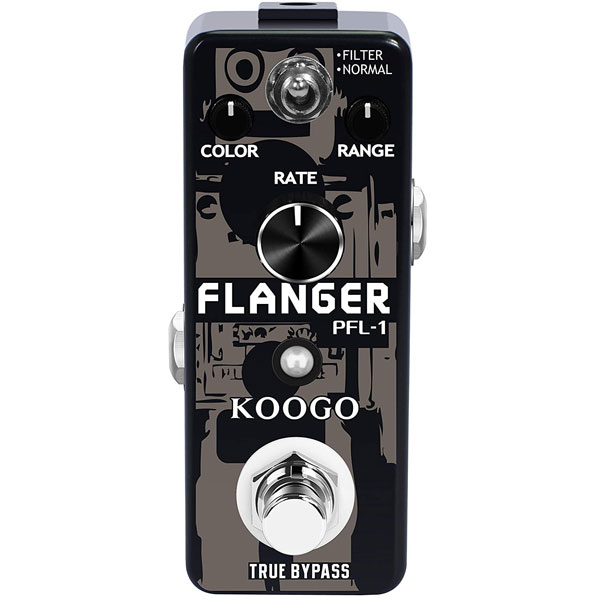
| Estimated Price | $35 |
| Type | Digital |
| Effects | Flanger |
| Connectivity | 1 x 6.35mm Jack Input, 1 x Output |
| Power | 9 Volts DC |
My Review: A modestly-priced offering, I must admit I wasn’t expecting anything special from the PFL-1 by Koogo. To my surprise, my findings were that this product is a reliable flanger pedal that produces a generous array of modulated overtones. One of the first things that I found was that this pedal is solidly built and compactly sized. I also believe that the PFL-1 performs all of the basic functions required of a flanger pedal for electric guitar.
Upon analyzing the layout of the pedal, I learned that in the center of the pedal there is the Rate control, which essentially changes the speed at which the modulation occurs. I also discovered that when this knob is cranked up, it results in chaotic whirls of flanging. When turned down, it produces the classic jet engine-style effect, which is great for psych-rock riffs or chord sequences.
Another thing I found is that the PFL-1 also boasts true bypass switching, to preserve your guitar’s signal path and protect against frequency loss. The housing is made from high-quality zinc alloy, a material known for its durability. There’s also a small LED indicator installed above the footswitch for on/off status, which allows us to clearly see when the pedal is engaged.
If I had to choose one quality that makes this pedal stand out amongst similarly priced options, it would have to be its ability t combine analog, vintage tones with experimental, digital-sounding flanging. This balance of affordability and sound quality is hard to find.
Who is this best suited for: The Koogo PFL-1 is a great choice for those who are taking their first steps into the world of guitar effects pedals. It’s relatively inexpensive and offers enough controls to sculpt your unique tones without becoming overcomplicated.
Bottom Line: With true bypass switching, three useful rotary controls, and two selectable modes. The Koogo PFL-1 is a well-equipped flanger pedal. It creates classic analog rolling effects, ranging from gentle and understated to the extreme and rumbling. The Filter mode allows you to create ambient textures that are well suited to breakdown sections.
7. NUX MOD Core Deluxe
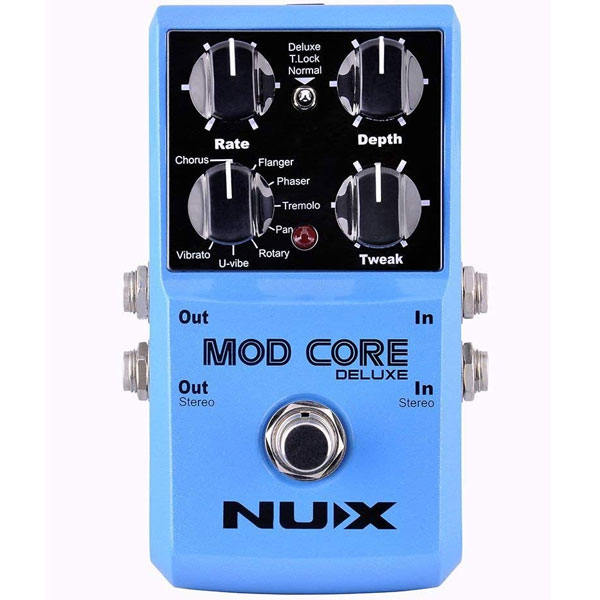
| Estimated Price | $80 |
| Type | Analog |
| Effects | Flanger, Chorus, Phaser, Rotary |
| Connectivity | 2 x 6.35mm Jack Input, 2 x Output |
| Power | 9 Volts DC |
My Review: Within minutes of getting our hands on the MOD Core Deluxe, we could tell that this is an excellent modulation pedal by NUX. I found it to be more extensive than most flanger pedals, with a total of eight effects. I was very impressed by the variety this pedal offered, and can safely say it is one of the most versatile offerings on the market. In addition to the flanger, you get access to chorus, phaser, tremolo, pan, rotary, u-vibe, and vibrato. If you like keeping your signal chain compact and organized, you’ll love the multi-faceted MOD Core Deluxe.
Another standout feature I found useful on this pedal was the pair of outputs for signal splitting and stereo input. I can say without hesitation that these connectivity options make it possible to use the pedal with either an electric guitar, bass, or even a keyboard if you wish. It’s a truly great tool for live performances of recordings.
After researching the pedal, I became aware that central to the MOD Core’s performance is the three-way switch located in the top center of the pedal. This allows us to choose between three modes: Deluxe, T.Lock, and Normal. I discovered that each of the modes completely changes the coloration of the effect that is selected, further increasing the variation.
Who is this best suited for: If you’re considering purchasing numerous modulation pedals, the NUX MOD Core Deluxe offers you the chance to combine them all in one compact pedal. It’s compatible with bass and keyboards, too.
Bottom Line: The MOD Core Deluxe is an extensive modulation pedal by NUX. It produces a range of high-quality effects, with a built-in flanger, phaser, chorus, and many others. With a total of four in/outputs, it also offers many connectivity possibilities. This is easily one of the best flanger guitar pedals out there.
8. EX-Swoosh
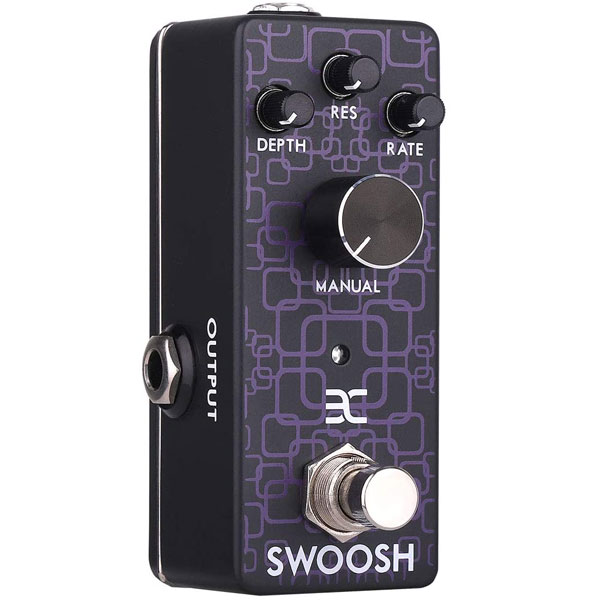
| Estimated Price | $35 |
| Type | Analog |
| Effects | Flanger |
| Connectivity | 1 x 6.35mm Jack Input, 1 x Output |
| Power | 9 Volts DC |
My Review: What sold me on the EX-Swoosh Flanger pedal is its undeniable affordability, and its intuitive, and unique design. With modern abstract aesthetics and narrow dimensions, it’s the kind of effects pedal that slots onto any pedalboard without any issues.
On the top layer of the EX-Swoosh, three controls can be used to tailor the flanger effect to suit your style. I liked how EX had clearly based the pedal’s design on vintage flangers but developed it in their own way. Firstly, I located the Depth control, which alters the frequency interaction of the flanger. Then I noticed the Res control, which I soon noticed affected the resonance and decay of the effect. Finally, I moved on to the Rate knob that controls the pace of the modulation.
The standout feature of this pedal is the fact that it is fitted with high-quality analog circuitry. It also provides true bypass switching, so that your signal’s integrity is shielded from any potential issues. There’s a small LED indicator positioned just above the footswitch which I found helpful for real-time evaluation of the pedal’s status. This combination of useful features makes the EX-Swoosh suitable for all styles of guitar playing.
Who is this best suited for: If you’re a fan of stylishly designed pedals, you’ll love the EX-Swoosh. Aesthetically pleasing, this pedal also offers all of the basic controls you need for creating the perfect flanger tones to add to your guitar’s output.
Bottom Line: The EX-Swoosh Flanger pedal offers vintage analog flanging that sounds warm and authentic. The large control in the center of the pedal, which is labeled Manual, allows you to quickly adjust the tone of the effect created, while the trio of controls at the top can be used to further adjust the characteristics to suit your style.
9. iSET Analog Flanger
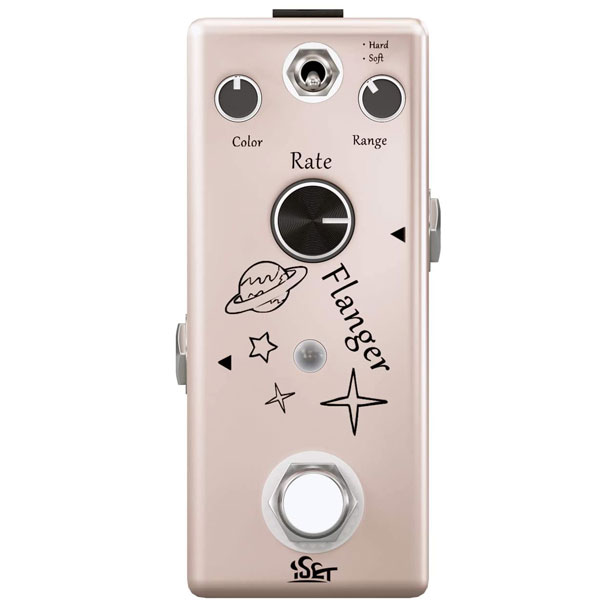
| Estimated Price | $30 |
| Type | Analog |
| Effects | Flanger |
| Connectivity | 1 x 6.35mm Jack Input, 1 x Output |
| Power | 9 Volts DC |
My Review: I must admit, I was a little apprehensive about the Analog Flanger by iSET initially, simply due to its low cost and seeming lack of features. To my surprise, after looking into the product in detail, I realized that it provides the classic warm flanging effect in a compact and easy-to-use housing. The pedal can be used to add some variation to your tone, or if you’re a fan of extreme effects, you can push it to the limits and create transformative modulation.
In addition to the two switchable modes, there are three rotary controls. The centerpiece knob affects the speed of the flanging and I think this would be useful for matching the pulsations to the tempo of a song. The color control adjusts the frequencies that are subjected to the effect, while the range control affects how widely its presence is felt.
One particular feature I found to be useful was the toggle switch that is positioned in between two rotary controls. This offers two distinct settings: Hard and Soft. I was impressed by the way the switch allowed me to instantly flick between harsh flanging and more subdued, mellow modulation.
Who is this best suited for: iSet’s Analog Flanger pedal is a good option for guitarists who are looking for an easy-to-use pedal which is affordable and provides a variety of modulation tones.
Bottom Line: Compact and functional, this flanger pedal offers all of the necessary controls for creating interesting modulation effects. Its analog circuitry is complemented by true bypass switching and an LED status indicator.
10. Donner Jet Convolution
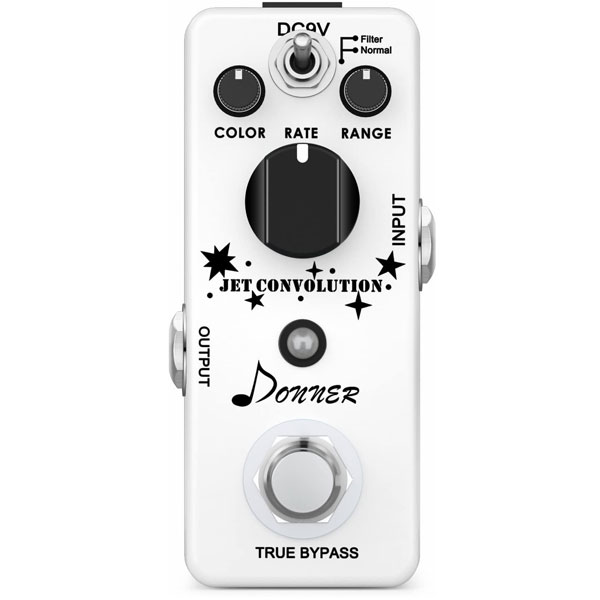
| Estimated Price | $30 |
| Type | Analog |
| Effects | Flanger |
| Connectivity | 1 x 6.35mm Jack Input, 1 x Output |
| Power | 9 Volts DC |
My Review: Here at Guitar Lobby, we’ve watched Donner’s range of affordable effects pedals grow at an impressive rate, so it came as no surprise to us that their Jet Convolution Flanger is one of the most popular low-priced modulation offerings available.
When I turned on the pedal I found that it produces the classical analog rolling effect, with plenty of variation and several unique additions. I also discovered switch at the top of the pedal allows you to choose between Filter or Normal mode. Upon further inspection, I found that Filter mode can be used to create bell-like flanging that isn’t automatically modulated.
When using Normal mode, on the other hand, I found that it produces the classic flanging sound that has graced many rock guitar tracks. If you like conventional rock tones, you’ll love this feature. The pedal has a sturdy aluminum chassis and employs true bypass switching along with a visible LED indicator. It is powered by a standard 9-volt power supply.
The thing that separates the Jet Convolution from other similar flanger pedals is the simplicity of its controls. Everything is compact and intuitively laid out on the face of the pedal, which makes it easier to quickly adjust any setting during a performance, rehearsal, or recording.
Who is this best suited for: Donner’s pedals are great for guitarists who don’t have a wealth of experience with effects. They are simple to use and provide the perfect platform for learning about the functions of the various controls. Jet Convolution is a great example of this.
Bottom Line: The Jet Convolution flanger pedal by Donner is housed in a robust casing, and has three rotary controls for tweaking the various aspects of the effect. It also offers a switch that can be used to toggle between Normal and Filter modes.
11. SONICAKE 5th Dimension
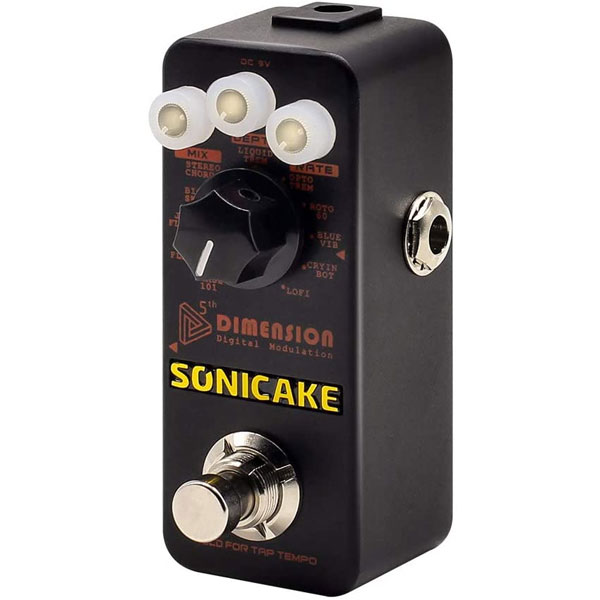
| Estimated Price | $60 |
| Type | Digital |
| Effects | Flanger, Phaser, Chorus, Tremolo, Vibrato, Auto-Wah |
| Connectivity | 1 x 6.35mm Jack Input, 1 x Output |
| Power | 9 Volts DC |
My Review: Sonicake’s 5th Dimension contains a total of 11 digital modulation effects, including high-quality flanging. Compared to similarly-priced flangers, this pedal has more functions that make it the perfect central hub for your modulation needs. I did find the 11 effects took some getting used to, but once their positions were memorized using the pedal became much easier.
I’m very fond of the addition of tap tempo, which I find is great for ensuring that the effects are locked in with the speed of a song or backing track. True bypass switching is also included, protecting your signal integrity and guarding against any high-end frequency loss that occurs when multiple effects pedals are used in a signal chain.
Along with the immersive flanger, the other effects that are included consist of: chorus, vibrato, phaser, tremolo, univibe, auto-wah, and bitcrush. I think it’s impressive how Sonicake has managed to condense all of these effects into a once compact pedal, without overly compromising on individual quality.
Modulation is one of the most transformative effects categories, so having access to all of its individual effects in one, the affordable pedal is very useful indeed. The fact that you can simply rotate the selector control and instantly transform the color of your guitar is a wonderful tool to have at your disposal.
Who is this best suited for: The 5th Dimension digital modulation pedal is a great choice for those who want a multitude of effects at their disposal. With a simple rotary control that selects the effect, it’s a very easily operable pedal that is suited to all levels of experience.
Bottom Line: Offering an extensive selection of 11 digital modulation effects, including high-quality flanging, the Sonicake 5th Dimension is a generously stacked pedal. Each effect can be tweaked using the three controls at the top of the pedal, and despite the large selection, the quality of each one is surprisingly good.
12. BOSS MD-200
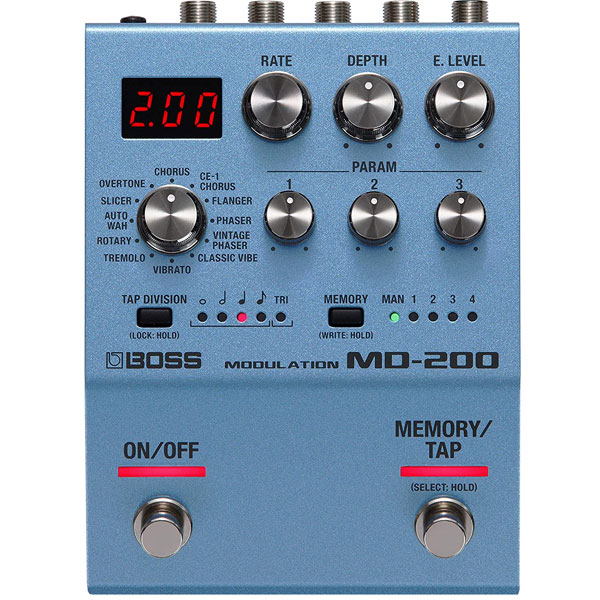
| Estimated Price | $250 |
| Type | Digital |
| Effects | Flanger, Chorus, Tremolo, Phaser, Auto-Wah, Rotary |
| Connectivity | 3 x 6.35mm Jack Input, 2 x Output |
| Power | 9 Volts DC |
My Review: When Boss introduced the 200 series, they set out to create a set of pedals that contain advanced processing options without taking up unnecessary amounts of space on your pedalboard. Therefore, I was very excited to test out this product. To summarize, I came to the conclusion that the MD-200 is arguably one of the best offerings from this distinguished range.
I was instantly intrigued by the multi-functional switches and controls, and I soon figured that the MD-200 operates intuitively. What’s more, despite the seeming complexity of the pedal, I was encouraged to find that it doesn’t take long to become familiar with the ins and outs of how it works. The onboard memory allows you to store settings for instant recall, and the MD200 features pristine audio quality with 32-bit AD/DA conversion.
If you can think of a modulation effect, the MD-200 can produce it. Whether I wanted to add warm, pulsating flanging to my instrument’s output, or choose from the host of other effects housed within the pedal, I was very impressed by the exceptional quality of each effect. There are 128 spaces for saving user presets, and an insert loop function allows you to position other pedals before or after the modulation effects.
The MD-200 contains algorithms from Boss’ flagship pedal the MD-500. This makes it capable of responding to any musical situation with ease, and its ability to combine different effects makes it one of the most extensive pedals on the market.
Who is this best suited for: I’d highly recommend the Boss MD-200 to musicians who have a good deal of experience with effects pedals. With that being said, it’s an ideal device to learn about modulation, how effects interact with each other, and how to produce your desired tones. So in theory, it’s a pedal for everyone to enjoy.
Bottom Line: The Boss MD-200 is one of the most detailed modulation pedals you will come across. Despite its extensive range of effects, the MD-200 is designed intuitively and works in a streamlined manner. The flanger effect is as good as you’ll find on any singular-effect pedal, and there are many tweakable parameters for further shaping the tone.
13. Electro-Harmonix Stereo Electric Mistress
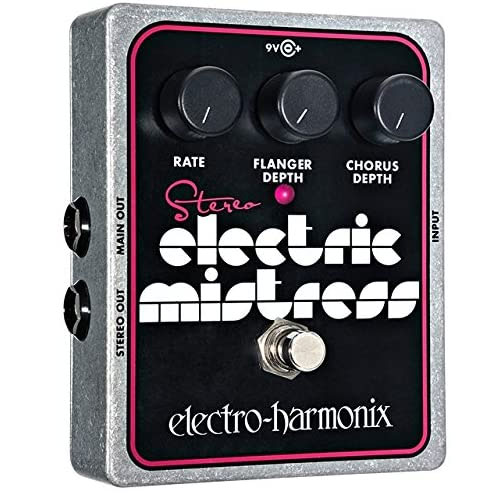
| Estimated Price | $180 |
| Type | Digital |
| Effects | Flanger, Chorus |
| Connectivity | 1 x 6.35mm Jack Input, 2 x Output |
| Power | 9 Volts DC |
My Review: I’m aware that this list of the best flanger pedals simply wouldn’t be complete with including an offering from effects legends Electro-Harmonix. The Stereo Electric Mistress is a pedal I’ve used in the past, and therefore I knew that it generates a variety of flanger tones that vary from wobbly and psychedelic to warm and textural.
This EHX pedal is fitted with two outputs, which made it possible to use it as a signal splitter for separating my dry and wet signals and sending them two individual amps. You’ll find this to be very useful if you need to create a definition between certain effects. There are also three tone-sculpting controls, which affect the Rate, Flanger Depth, and Chorus Depth.
In addition to the flanger, I was reminded that the pedal also produces a good quality chorus. You could even blend the chorus and flanger to double up on the modulation if you desired, creating thicker-sounding tones. Like all Electro-Harmonix pedals, the Stereo Electric Mistress includes true bypass switching.
Originally released in 2007, there’s a reason that Electro Harmonix has never needed to create a new version of the Stereo Electric Mistress – it’s really that good! Having two independent stereo outputs is a rarity on most flanger pedals, and that’s essentially what sets this product apart from the rest.
Who is this best suited for: If you’re considering purchasing a chorus pedal in addition to a flanger, the Stereo Electric Mistress is a great choice. You can always rely on EHX pedals to produce the finest tone-shaping effects, and the Electric Mistress lives up to their deserved reputation.
Bottom Line: With dual outputs for signal splitting, true bypass switching for protecting signal integrity, three rotary controls for shaping the characteristics of the effects, and the addition of chorus alongside the flanger, the Electro Harmonix Electric Mistress is a fantastic modulation pedal.
14. Wampler Terraform
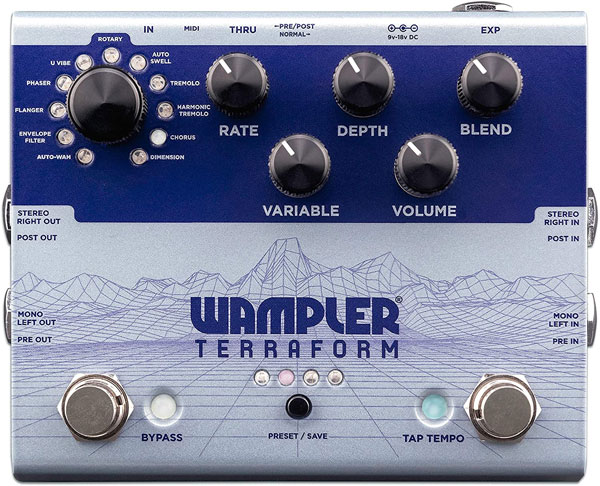
| Estimated Price | $260 |
| Type | Digital |
| Effects | Flanger, Phaser, Rotary, Chorus, Tremolo, Envelope, Auto-Wah |
| Connectivity | 1 x 6.35mm Jack Input, 1 x Output |
| Power | 9 Volts DC |
My Review: We are huge admirers of Wampler’s effects pedals because they offer top-quality performance and unique slight nuances that make them stand out amongst the crowd. Almost instantly I could tell that the Terraform is a brilliant modulation pedal. I was enthused by its extensiveness, offering a total of 11 custom-designed effects blocks.
Another thing that really impressed me is that the flanger effects are accompanied by a phaser, chorus, u-vibe, tremolo, and many more. I discovered that there is a tap tempo footswitch independent of the on/off switch, and you can save your own presets into one of the four onboard slots. If you like to have your effect settings ready to access at any point, you’ll love the intuitive design of this Wampler pedal.
This pedal is Wampler’s first venture into the multi-FX market. Despite this, it’s one of the most sophisticated pedals in its field. The thing that makes the Terraform stand out in my opinion, is its compatibility with MIDI instruments. You can control the 8 preset slots using MIDI, which provides ultimate control over the effects.
Who is this best suited for: The Wampler Terraform is no ordinary modulation pedal. It’s built especially for the curious musician who isn’t satisfied with predetermined effects and instead wants to wander into unchartered territory and create their unique blend of modulated tones.
Bottom Line: With a host of tweakable controls, 11 modulation effect categories, and space to save four of your own presets, the Wampler Terraform is a classy pedal that goes above and beyond what you’d expect from a standard flanger pedal.
15. Donner Multi-Pad 100
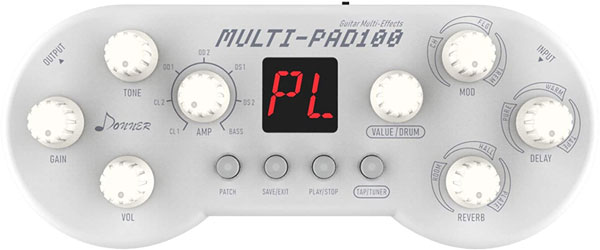
| Estimated Price | $50 |
| Type | Digital |
| Effects | Flanger, Chorus, Tremolo, Reverb, Delay |
| Connectivity | 1 x 6.35mm Jack Input, 1 x Output |
| Power | 9 Volts DC |
My Review: After researching the Multi-Pad 100 by Donner, I found that it houses 5 effect modules, including warm and immersive flanging. There’s also delay, reverb, chorus, and tremolo, which I personally regard as four of the most useful effects for guitar. The addition of delay and reverb makes for interesting combinations of modulation and space, which can lead to hours of fun experimentation.
My first impression was that this pedal looks more like a controller for an old-school game console than a guitar effects unit. However, I believe that the unique design adds character to the Multi-Pad 100 and makes it refreshing to use. There is an inbuilt tap tempo and tuner as well as the possibility of saving your own presets if you like to recall them later on.
Who is this best suited for: The Multi-Pad 100 is best suited to guitarists who are looking for a variety of effects without spending lots of money purchasing them all individually.
Bottom Line: Unique in design, the Multi-Pad 100 is like no other effects pedal on the market. It combines modulation effects like flangers and chorus with space-based effects like reverb and delay, and in the process inspires you to create unique combinations of effects.
16. Flamma FX100
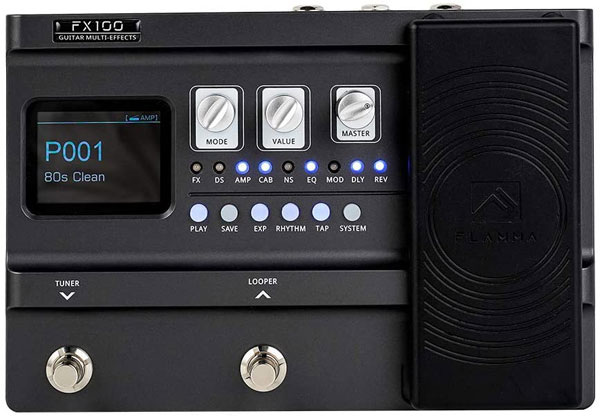
| Estimated Price | $150 |
| Type | Digital |
| Effects | Flanger, Delay, Reverb, EQ, Chorus, Phaser, Distortion |
| Connectivity | 1 x 6.35mm Jack Input, 1 x Output |
| Power | 9 Volt DC |
My Review: Right off the bat, it became clear to me that Flamma’s FX100 is an extensive multi-effects pedal that produces particularly impressive flanging. I discovered that it also contains an additional 9 effects blocks, with each category including several effects to form a total of over 150! This would allow me to create unique mixtures of effects and save them to the pedal’s memory.
There are 200 presets which include flanger settings, phasers, amp modulations, and many more. Another feature I was really impressed with is the included 80-second looper. This can be used to jam along with your backing tracks and perfect your guitar parts through repetition.
The thing that makes the Flamma FX100 stand out is its USB connectivity, which allows you to easily plug the pedal into a PC or laptop so that you can use it for direct recording purposes. Not many flanger pedals offer this, so to see it present on this product is refreshing.
Who is this best suited for: The 80-second looper included with the Flamma FX100 makes it an ideal choice for guitarists who like to rehearse in solitude.
Bottom Line: The FX100 contains a huge library of effects presets. The flanger is of high quality, and all of the amplifier models also sound authentic. With over 200 presets, it’s the type of pedal that you’ll never get bored of exploring.
17. BOSS ME-80
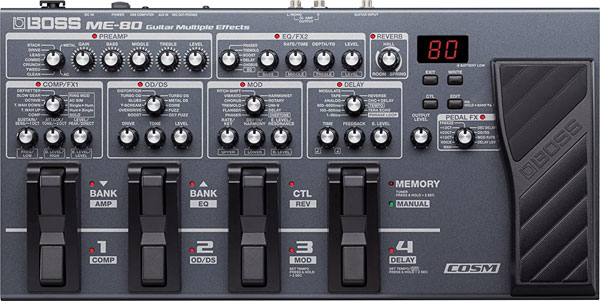
| Estimated Price | $300 |
| Type | Digital |
| Effects | Flanger, Multi-FX |
| Connectivity | 1 x 6.35mm Jack Input, 1 x Output |
| Power | 9 Volts DC |
My Review: Last but by no means least; we have the exceptional ME-80 by Boss. It didn’t take long to notice that this pedal is with a plethora of brilliant tone-sculpting options including high-quality flangers. Here at Guitar Lobby, we can safely say that this multi-effects pedal is a joy to use.
One of the standout features of this product is the sheer variety of flagship-quality Boss amplifiers and effects housed within the presets. For this reason, I believe that the ME-80 is an all-in-one hub for your processing needs. I was excited to use the 8 foot pedals which control the effects. This allowed me to save settings into the internal memory of the pedal and access them almost instantaneously when I needed them.
With 24-bit AD and DA conversion, the ME-80 is one of the fastest working and most reliable pedals money can buy. It combines a vast range of processing tools with a welcoming vintage-style operation, creating a unique user experience.
Who is this best suited for: The ME-80 is perfect for guitarists who have prior knowledge of effects, and want to gain access to sophisticated processing options on their pedalboard.
Bottom Line: With so many effects and processing options it’s hard to fit them onto one page, the Boss ME-2 offers everything you could need in addition to high-quality flangers and other modulation based effects.
Choosing the Right Flanger Pedal (Buying Guide)
Flanger pedals are one of the most popular in the modulation category of effects, alongside chorus and phasers. They are commonly used by guitarists to add color to their clean signal and have the potential to be either transformative or subtle depending on the way the effect is used.
In the remainder of this article, we will explore all of the relevant information on flanger pedals. This comprehensive guide will provide you with the answers to all of your flange-related questions, and put you in a better position to choose the perfect flanger pedal to suit your stylistic needs as a musician.
How Do Flanger Pedals Work?
The flange effect is created by combining two identical audio signals simultaneously, but slightly delaying one of the signals. The delay is caused by a device known as an LFO, or low-frequency oscillator. Rather than the delayed signal being consistent in time, the periods of delay are varied by the LFO, but they remain very slight.
The space that occurs between the two signals interacts with each other in a weaving manner, essentially causing modulation in the frequencies produced. This “swooshing” sound is the most stereotypical form of flanging and is featured on all flanger pedals.
Many flanger pedals also offer more experimental forms of the effect, as well as the stereotypical “jet engine” sound that is more familiar. By feeding the output partially back into the input, feedback is produced. This adds a whole another layer to the flanging effect.
The slightly late signal is generally delayed by between 5-25ms. This is the sweet spot for producing flange. If the signal is delayed by more than 25ms, it starts to sound more like a chorus and loses the intended flanging effect.
Flangers vs. Phasers vs. Chorus
As I’ve already touched upon, flangers belong to a group of effects known as modulation. Also included in this category are phasers and chorus pedals. These three are often confused with each other because they utilize a very similar process to create their results. Nevertheless, when you examine each one individually, it becomes apparent that there are clear differences between them.
Phasers work in slightly different ways to flangers. They still split the signal into two identical versions, and then shift the phase of one of the signals. The two signals are then recombined in a single signal, creating phase cancellation in the form of notches. The notches sweep through the frequency output and cause the effect of phase.
Chorus pedals are more similar to flangers. They also split the signal into two identical clones, but chorus pedals use a longer delay time between the signals than flangers do. This causes the effect to be more subtle, and a slightly detuned sound is produced.
Multi-Effects Pedals with Flangers
Some of the flanger pedals featured in this article are single-effects pedals, while others offer multiple effects. Modulation effects are often grouped on pedals, with phasers, chorus, rotary, and flangers all included within a single housing.
Multi-effects pedals are a great way to save room on your pedalboard, and to save you the hassle and cost of purchasing each effect individually. They’re a great starting point for musicians who perhaps don’t have a lot of experience with processing. The only drawback of using a multi-effects pedal with a flanger installed is that due to the many options they provide, the manufacturers often focus less on the individual effects when designing the circuitry.
A pedal that is exclusively for flanging will have circuitry and inner components that are specifically chosen to enhance that effect, whereas a multi-effects pedal needs to cater for many other effects, and therefore the individual quality often suffers as a result.
A Flanger Pedal’s Ideal Position in Your Signal Chain
The positioning of effects pedals in a guitarist’s signal chain is a hotly debated topic. Like most musical music-related questions, the answer is subjective, to a degree. However, if you want conventional results from your flanger pedal, some generally accepted rules are considered to get the best out of your effects pedals.
Some guitarists overlook the positioning of their pedals, but this is a mistake. Although the guitar you choose and the amplifier you send it to do have notable impacts on your overall tone, the positioning of your effects pedals is arguably just as important. If you are deliberately trying to create certain tones, it’s essential to consider the placement of every pedal, and how they interact with your whole signal chain.
Flanger pedals, like all modulation pedals, should be positioned towards the back of your signal chain. The main reason for this is that the flanging effect will be applied to all of the pedals that come before it in the chain.
Your signal chain should start with any dynamic-altering pedals, like compressors, EQ, or volume pedals. These pedals require the cleanest possible signal to do their jobs most efficiently. Next, any gain-based pedals such as distortion, overdrive, or fuzz should be placed. These pedals cause significant alteration to your signal.
Then, just before modulation effects, you should position any filters, like wah pedals. The only effects that should be positioned after a flanger are reverb and delay. Of course, there’s room for experimentation, and you may find interesting tones by tweaking this general advice. I’d suggest starting with the conventional ordering, then moving certain pedals and swapping them to see what results in you achieve.
Powering Your Flanger Pedal
When it comes to powering your flanger pedal, there are a few options that are often included by the manufacturer. The size of the pedal, the processor that is installed within it, and the number of effects it produces are factors that will usually decide what the power requirements are.
The vast majority of flanger pedals require 9 volts DC power. Some larger ones may require 12 volts or 18 volts DC, but this is a rarity. The easiest and most efficient way to power a flanger pedal is by using a dedicated power supply. These devices are relatively inexpensive, and they can provide power to multiple pedals at once.
It’s important to use your time efficiently when you are performing or recording, so using a dedicated power supply is the best option. You can usually mount them to your pedalboard or attach them using Velcro. All of the pedals can then be left plugged into the power supply, so you can simply plug your instrument cables in, plug the supply into the mains, and you’re good to go.
Some flanger pedals may also cater for battery power. This is usually in the form of a singular 9-volt battery. The obvious disadvantage of relying solely on batteries is that they can run out at any time, which has disastrous results if you are in the middle of a performance. They do, however, provide the benefit of allowing you to use your pedals in a mobile situation or a location where there perhaps isn’t any mains power available.
The best way to power a flanger pedal if possible is to combine a power supply with batteries. By installing batteries into all your pedals, you are covered if the mains power cuts out for some reason. Likewise, if the battery dies, the mains power is there to take over and ensure that your guitar doesn’t cut out.
Common Controls Found on Flanger Pedals
The majority of flanger pedals offer a set of adjustable controls. These parameters are usually presented as rotary knobs, or in some cases, faders. Each of the controls changes the overall feel and characteristics of the flanging effect and allows the guitarists to tweak the settings to suit their needs. The most common controls found on flanger pedals are Rate, Depth, and Feedback.
Rate (or speed) controls the speed at which the delayed signal is subjected to variation. If the rate is turned down, the classic “jet-engine” flanger effect is produced. If the rate is turner up, the effect becomes more chaotic and otherworldly.
Depth controls are sometimes also called “mix”. This parameter controls how much flanger is present in your output in comparison to the presence of your dry signal. If the depth is set to full, the flanging will be very prominent and wavy. Set it lower, and only a hint of modulation will be audible.
Feedback adjusts the amount of the output signal that is sent back into the input. Similar to the feedback you get when a microphone is too close to the monitors onstage, this setting causes the flanger pedal to create a whirl of noise with unpredictable overtones.
Flangers Combined with Other Effects
Modulation effects are extremely compatible with other pedals. Flangers in particular blend very well with a variety of other effects, due to their versatility. If you use a flanger pedal subtly, mixing it with other effects can evoke interesting tones from an electric guitar.
Gain-based effects like distortion, overdrive, and fuzz are all capable of being combined with flangers. These pedals do raise the volume of your guitar’s tone, so it’s important to consider this before adding them to a flanger, and you may need to compensate by adjusting the level settings on the gain-based pedals.
Additionally, flangers sound great when combined with reverbs and delays. These effects can be used to add space to your tone and create a softness that blends wonderfully with the swirling modulation produced by a flanger pedal.
It’s less common to combine flangers with other forms of modulation, like phasers, chorus, and rotary effects. The main reason for this is that these pedals all use similar methods to one another for creating their distinctive effects. Therefore, combining them simply adds to the modulation rather than changing it into a new sound.
If you’re feeling experimental, you could try combining a flanger pedal with wah. Wah is arguably the riskiest effect to combine with modulation, as it causes sudden peaks and troughs in the frequency output. However, many great guitarists have created brilliant tones by combining wah with other effects, so it’s worth playing around with to see what you can come up with.
Using a Flanger Pedal for Recording
Effects pedals are not just indispensable tools for live performances, they are also very useful in the recording studio. Whether you have access to an amplifier or are simply going straight into the direct input of an audio interface, recording using effects pedals allows you to tailor your sound and create the exact tones that are required for a guitar track.
Flanger pedals are great for recording purposes. You can predetermine the tone you want to produce using the pedal, and ensure that off of the levels are correctly set. Then, when it comes to recording a guitar track, you don’t need to mess around adjusting parameters on the pedal.
Recording with a flanger pedal can be done using one of two methods. Firstly, you could opt to use an amplifier. This method involves setting up a microphone that is positioned near the speaker cone of the amp, then sending the mic into an XLR input on an audio interface. Headphones are usually required for this method so that you can hear the rest of the track, or metronome if you choose to use one, while you are recording. Without headphones, the microphone will pick up spill from the monitors.
Using an amplifier provides you with one main benefit – you get your exact on-stage sound in the studio. If your tone must remain consistent from the stage to the studio, then using an amplifier is the easiest way to ensure this. Purists would argue that using an amplifier is the purest way to record electric guitar with a flanger pedal.
The only issue with using an amp is that it’s much harder to undo any mistakes or unwanted tones that occur in the recordings. If you would rather have the cleanest version of your electric guitar recording and flanger pedal, then using the direct input method might be your best option. For this method, you simply plug your instrument into the input on the flanger pedal and then send the output into the line-level input on the audio interface.
This keeps your signal clean so that the flanger pedal isn’t fighting against the coloration of the amplifier or the tones produced by the specific microphone you are using. Consequently, there is more room for maneuver during the mixing process. If you then decide that the guitar recording would sound better through an amp, you can always re-amp it, send the audio through the amplifier, and capture it with a microphone after the initial recording.
True Bypass and Buffered Flanger Pedals
Effects pedals haven’t always been the reliable, relatively noiseless little devices that we know them to be today. In fact, in the early years of pedal manufacturing when engineers were still figuring out the most efficient ways to create them, guitarists often had to contend with unwanted noise, electrical hum, and signaling issues.
As technology improved over the years, manufacturers learned more reliable methods for keeping pedals as clean as possible. The two most popular ways that have survived until the present day, are known as true bypass switching and buffered circuitry.
Let’s start with true bypass. If a flanger pedal is fitted with this mechanism, it is guaranteed to preserve the integrity of your signal, even if the effect is not active. True bypass flanger pedals allow the electric guitar’s signal to pass through the signal chain, without causing any noticeable alterations. The majority of modulation pedals use this method for its reliability.
Buffered flanger pedals, on the other hand, strengthen the electric guitar’s signal before it reaches the chain. When the signal is passed through the chain, the buffered circuitry then restores the power to an ideal level. This process is constantly going on, even when the pedal is not used.
To decide which of these two types of flanger pedals are best suited to your needs, you can follow this general rule. If you are using extensive cable runs, buffered flanger pedals are likely to keep the unwanted noise at bay and preserve your tone. If you are using shorter cable runs, the true bypass will suffice.
Flanger Pedals with Dual Outputs
As you may have noticed, many of the flanger pedals featured in our definitive list earlier in this article are designed with two outputs. This is common on high-end effects pedals, and although it may seem unnecessary, it can open up many possibilities to guitarists that don’t exist with single-output pedals.
Having two outputs allows you to split the signal that is sent from the pedal. Why would you need to do that? Having two separate signals means you can send your clean guitar into one amplifier, and then your wet signal into another amplifier. Both of these outputs can then be played simultaneously, creating the illusion that two individual instruments are being played.
In the majority of bands who have one guitarist or bassist with no guitar at all, signal splitting is used to fill up the sound. It means that when you activate your effects, there’s no loss of power, and the clean tone continues to play underneath the wet signal.
This method is especially useful for sections in a performance where the guitar plays single-notes, such as a solo or lead melody. The clean tone playing underneath adds substance to the sound, thus boosting the levels to keep the guitar as the focal point of the section. Many bands who play large venues like arenas or festivals use signal splitting to ensure that their guitar is powerful enough to reach the whole audience.
VST Plugins
Flanger pedals are the most reliable way to produce the flanging effect. They allow you to replicate your tone onstage and in the recording studio, and can be tweaked in real-time using the onboard parameters. There is, however, another way to add flanging to your music when you are recording.
With digital music production exploding in recent years, and equipment now more accessible than ever to the masses, a new form of audio effects has risen to the forefront. VST plugins are used in the majority of music recorded today, and they offer a convenient and intuitive way to add effects like flanging to your tracks.
Flanger VST plugins are great because they allow you to adjust the settings with exact precision, even after you’ve already recorded the audio into your chosen DAW. The danger with them is that it is easy to spend long periods tweaking the settings and getting lost in all of the possibilities.
Most popular DAWs have flangers built into their effects racks. Some are certainly more effective than others. Many flanger VST plugins can be purchased and added to your effects rack. These vary in quality, so it’s always a good idea to do some prior research before investing in one.
Ultimately, flanger pedals are the best way to produce the effect both on the stage and in your recordings. Combining them with flanger plugins may be the best way to learn more about how the effect is produced.
Flangers and Other Instruments
Flanger pedals are not exclusive to the electric guitar. Most of them can also be used with any other electronic instrument. Keyboards sound great when a flanger is added to them, especially if you want to create psychedelic tones.
Additionally, many flanger pedals can also be used with a bass guitar. Although modulation combined with bass is rarer, there are many ways to create interesting tones by combining a flanger with the lower frequencies of this instrument. It will interact differently than with an electric guitar, so you may need to adjust the settings to get the best results.
You can even apply a flanger to recorded drums. Many producers have used modulation on cymbals because the high-end frequencies are dramatically affected by the sweeps of flangers, phasers, and rotary effects. Synthesizers also sound great when combined with a flanger pedal, especially for creating ambient textures.
How Flanger Pedals Came to Be
The origin of flanging is a topic of much debate amongst music historians and recording enthusiasts. Although it’s not unanimously agreed upon, the majority opinion is that guitar legend Les Paul, who famously created the popular Gibson model that shares his name, is credited with discovering the flanging effect sometime in the late 1940s or early 1950s.
Les Paul performed most of his early experiments using primitive equipment like acetate disks on variable-speed vinyl players. The song “Mammy’s Boogie”, released in 1952, is heralded as a breakthrough for flanging and modulation in general.
In this song, Paul employed a pair of disk recorders, with one of them using variable speed control. This resulted in the first example of flanging in recording music history, and from then on, other recording engineers and producers were inspired to develop modulation effects further.
Fast forward to the 1960s when effects became much more accessible and recording technology experienced rapid advancements, and John Lennon’s desire to create a double-tracked vocal effect led audio engineer Ken Townsend to invent artificial double tracking. It is supposed that Lennon himself came up with the term “flanging” to describe this newly found vocal effect, and the rest is history!
Wrap Up
Flanger pedals are one of those rare effects that lend themselves to a variety of styles and genres. Due to the versatility of this effect, it can be used for many different purposes, and to varying extremes. These pedals also blend nicely with most other effects.
Now that you’ve read through this detailed guide on flanger pedals, you should have a clearer idea of which particular offering is best suited to your needs. The most exciting thing about purchasing a new pedal is experimenting with it, so all that’s left to do now is go and enjoy the process!

My name is Chris and I’ve had a passion for music and guitars for as long as I can remember. I started this website with some of my friends who are musicians, music teachers, gear heads, and music enthusiasts so we could provide high-quality guitar and music-related content.
I’ve been playing guitar since I was 13 years old and am an avid collector. Amps, pedals, guitars, bass, drums, microphones, studio, and recording gear, I love it all.
I was born and raised in Western Pennsylvania. My background is in Electrical Engineering, earning a Bachelor’s degree from Youngstown State University. With my engineering experience, I’ve developed as a designer of guitar amplifiers and effects. A true passion of mine, I’ve designed, built, and repaired a wide range of guitar amps and electronics. Here at the Guitar Lobby, our aim is to share our passion for Music and gear with the rest of the music community.

The Nux listed here is digital, not analog. At least three of the pedals listed likely use the exact same circuit and components but have different names on their cases.